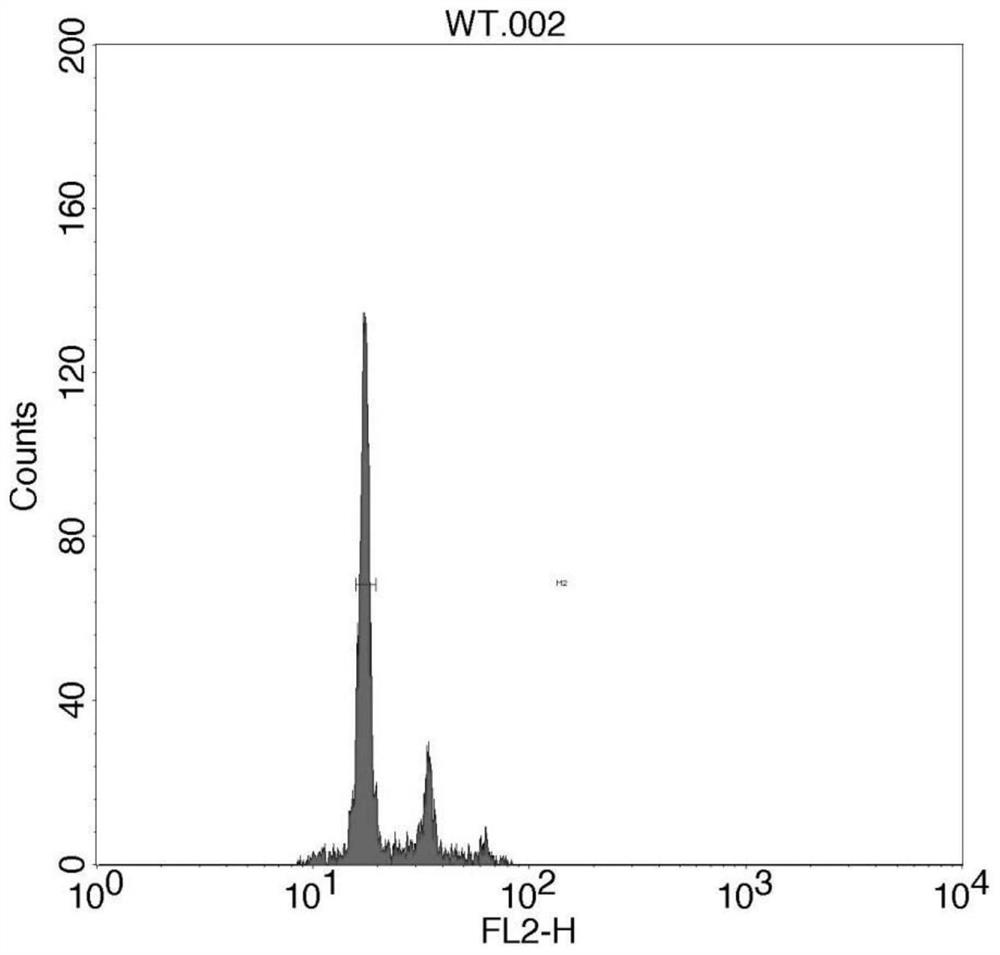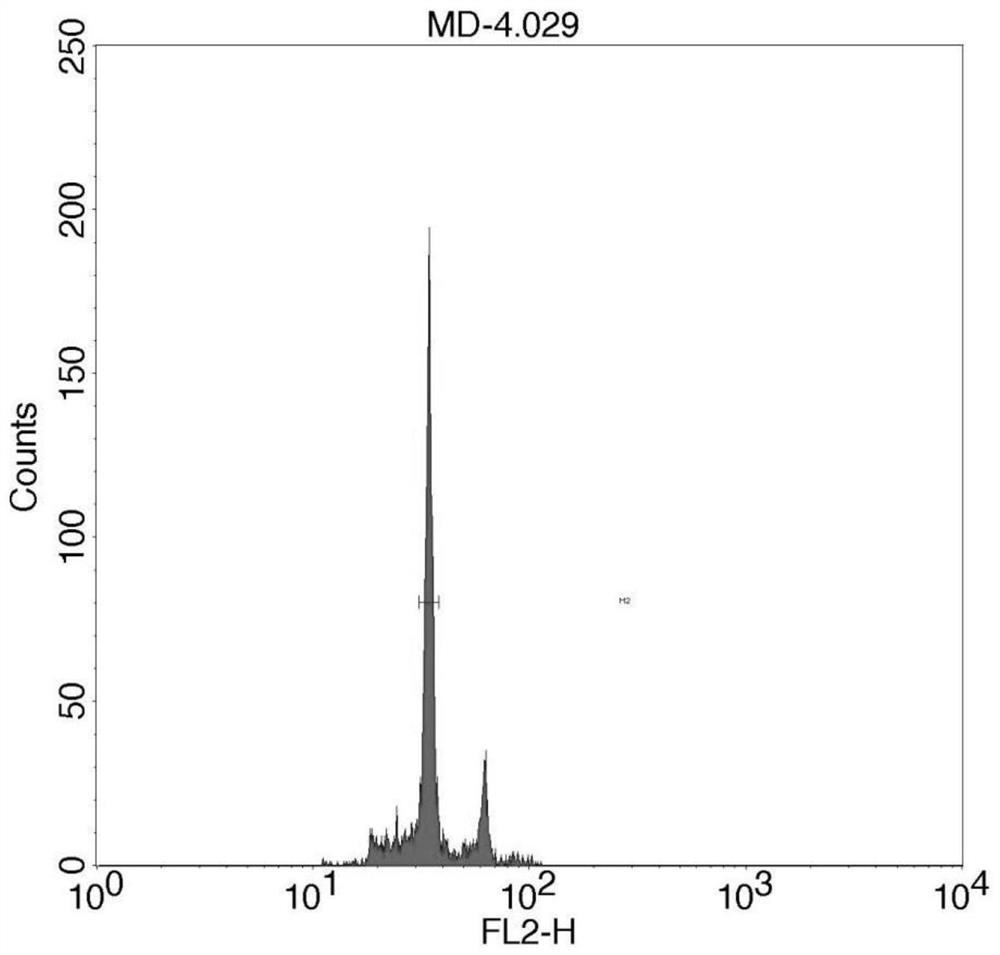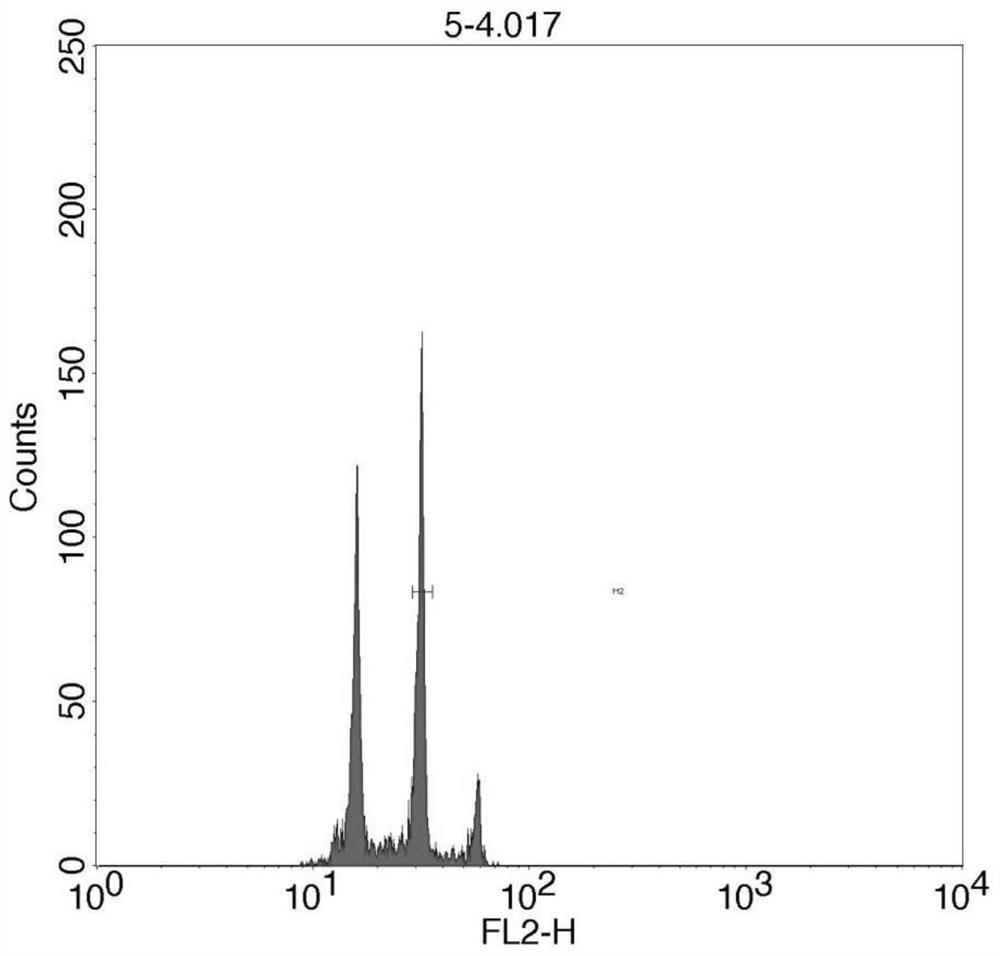Cultivation method of polyploidy of triptonia macranthum
A cultivating method and a technology for moss brightleaf, applied in the field of cultivating polyploidy of brightleaf moss, can solve the problems of unsatisfactory breeding, low chromosomes, and bryophytes have not yet been applied, and achieve improved breeding efficiency, stable polyploid genome, The effect of increasing the number of false roots
- Summary
- Abstract
- Description
- Claims
- Application Information
AI Technical Summary
Problems solved by technology
Method used
Image
Examples
preparation example Construction
[0033] The invention uses a colchicine solution to soak the moss brightphyllum protonema to obtain the mutagenic moss brightphyllum protonema. In the present invention, it is preferable to use the sterile moss brightphyllum protonema obtained from tissue culture as a material for the colchicine solution treatment, and using the moss brightphyllum protonema as a mutagenic material can shorten the breeding time. In the present invention, the protocelium of Physcomitrella aciniphyllum is preferably young vigorously growing protocelium of Physcomitrella aciniphyllum; the preparation method of the protocelium of Moss aciniphyllum preferably includes the following steps: selecting robust mature After the spore capsules of Physcomitrella phyllosum were sterilized, the spores germinated, and the obtained aseptic protonema were cultured for 7 days, and then subcultured twice in succession to obtain young and tender protocelia of Physcomitrella brightoli. In the present invention, the m...
Embodiment 1
[0042] (1) The aseptic protonema obtained by tissue culture of healthy Physcomitrella brightoli was selected, and the obtained protonema was continuously subcultured once after the protonema was cultured for 7 days. The subculture steps are as follows: scrape about 0.1 g of the protonema of Physcomitrella brightoli grown on the surface of the medium with a sterile spoon, mix it with 10 mL of sterile water, and grind it with a homogenizer to make a moss suspension. The grinding parameters are 10s / time, 10 times / material, the moss suspension was inoculated on a new medium for culture, and the protonema fragments in the suspension regenerated the protonema.
[0043] (2) The preparation steps of the colchicine mother solution are as follows: accurately weigh 1 g of colchicine with an analytical balance, place the colchicine in a sterile blue cap reagent bottle, and add 100 μL of dimethyl sulfoxide (Dimethyl sulfoxide, DMSO), add 100mL sterile distilled water, stir to dissolve so t...
PUM
| Property | Measurement | Unit |
|---|---|---|
| Length | aaaaa | aaaaa |
Abstract
Description
Claims
Application Information
 Login to View More
Login to View More - R&D Engineer
- R&D Manager
- IP Professional
- Industry Leading Data Capabilities
- Powerful AI technology
- Patent DNA Extraction
Browse by: Latest US Patents, China's latest patents, Technical Efficacy Thesaurus, Application Domain, Technology Topic, Popular Technical Reports.
© 2024 PatSnap. All rights reserved.Legal|Privacy policy|Modern Slavery Act Transparency Statement|Sitemap|About US| Contact US: help@patsnap.com










